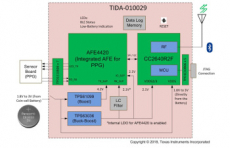Sidebar
- Home
- News
- Training
- Kit
- Stack
- Chip
- Mix
- Project
- IoT
Renesas:Outdoor Sensor for Automatic Home or Building HVAC System
The outdoor sensor unit(s) for automatic home or building HVAC systems provide outdoor data from one or multiple bearings (North, East, West, South) to a master actuator. This can be one or all of the following data:
- Outdoor air quality (OAQ according to the Environmental Protection Agency)
- Temperature and relative humidity (degrees, percentage)
- Light/Sun (lux)
- Barometric pressure (mbar)
This reference design offers a Bluetooth® 5.0 SimpleLink™ option with better industrial noise immunity, more range, and less power for industrial applications such as power tools that operate from a 5- cell Li-ion battery. This power stage reference design uses a single Bluetooth low energy (BLE) MCU for both wireless connectivity and three-phase brushless DC (BLDC) motor trapezoidal control, designed in a single board, reducing the BOM and hence overall cost. The design demonstrates the BLE RX sensitivity of –96 dBm even when the power stage is driving motor, showing the robustness of RF performance. The design also demonstrates a small form factor power stage with overcurrent and short-circuit protection by MOSFET VDS sensing.
This reference design enables a wearable, optimized saturation of peripheral capillary oxygen (SpO2) and multi-sensor, multi-wavelength optical heart rate monitor (HRM). It uses AFE4420 device, which is a single-chip, bio-sensing front end for photoplethysmography (PPG) measurements. It supports up to four switching light-emitting diodes (LEDs) and up to four photodiodes to enable signal acquisition of up to 16 Phases. The CC2640R2F device (supporting Bluetooth® low energy 4.2 and 5) transfers the measured data to a remote location. This patient-monitoring design uses a single CR3032 battery with a 30-day life cycle. Raw data is available to calculate heart rate, SpO2, and other related parameters. 2 onboard light-emitting diodes (LEDs) identify low-battery detection and a Bluetooth connection.
Car access has become more convenient as design engineers take advantage of technologies that are widely used in other applications. The automotive industry has evolved from providing mechanical keys to unlock vehicles to fobs with buttons that can unlock vehicles. Now, the most common form of car access revolves around passive entry passive start (PEPS) systems, enabling drivers to enter their car but also start the engine without physically using a key.




